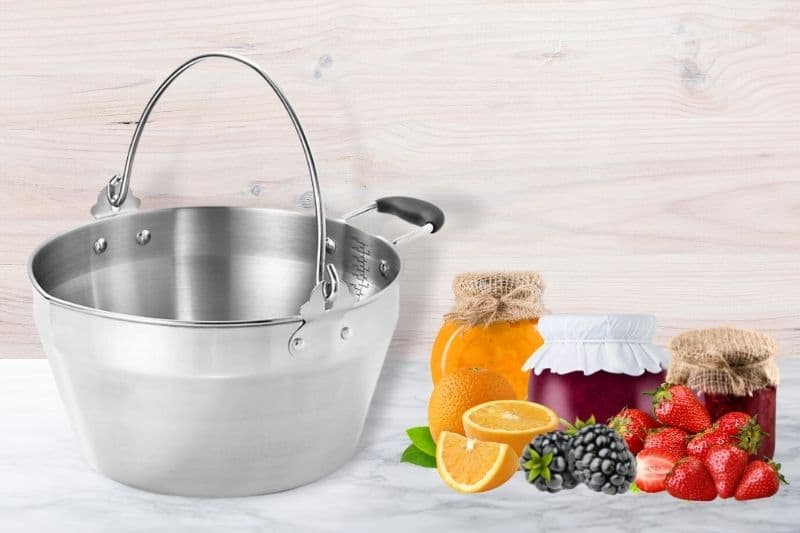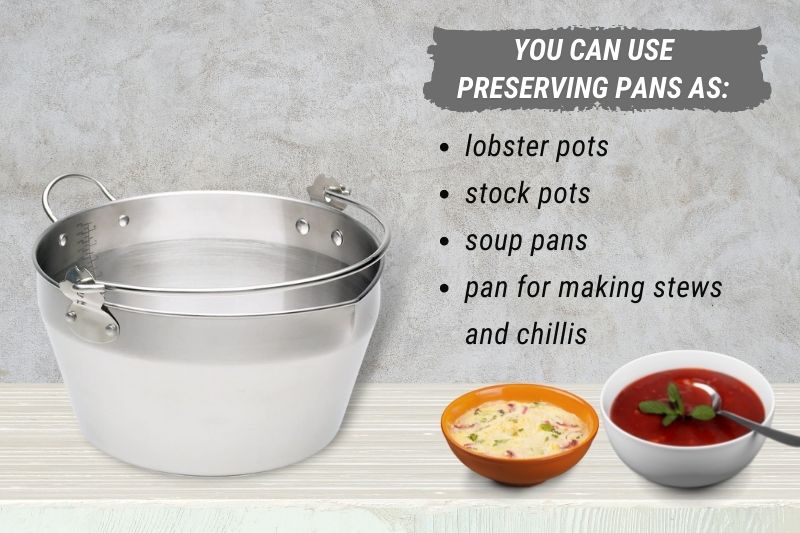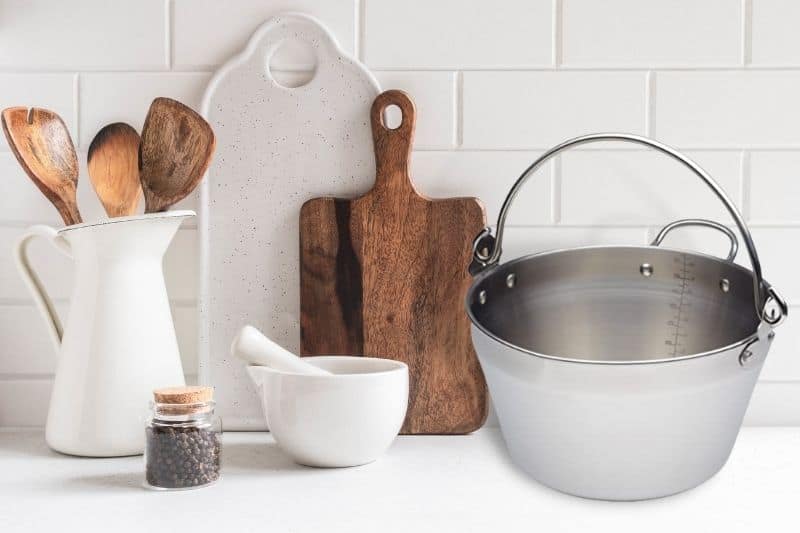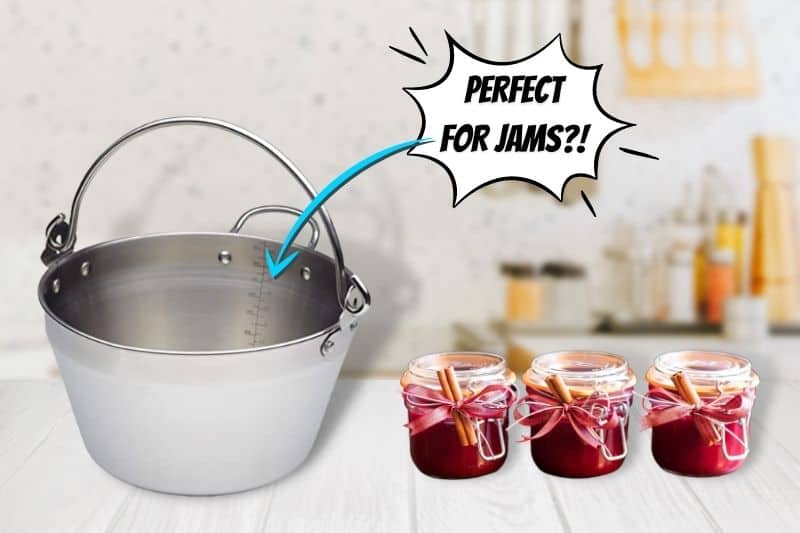If you’re really into cooking or baking, you may know what a lot of pots, pans and utensils are for. However, the occasional piece of cookware may come up and leave you a bit stumped. Like maslin pans, for example.
What are these pans, what are they designed for and do they have a place in the modern kitchen? Let’s find out, shall we?
What Is a Maslin Pan?
A maslin pan is a traditional British and European pot for making jams, marmalade and preserves. It’s a heavy pan with a thick base and sides and has a teacup-like shape.
Preserving pans are typically very large too. They are between 8 and 12 litres. They’re large because you need a lot of fruit to make a jam or preserve.
Maslin means ‘mixture’, so these pans are designed for, you guessed it, mixing things. Mixing things in a specific way, though. The shape, size and materials used to make maslin pans are all designed to make the process of mixing these things much easier.

Maslin pans are shaped a bit like a teacup. They have curved sides, a large base and a very wide mouth. When making preserves, evaporation is very important.
The large, thick base means that the fruit heats up quickly and evenly, and the entire base can contact the heat source allowing it to heat up the mixture further.
The large mouth allows liquid to escape quickly, concentrating the fruit juices and the sugar together to make a tasty jam.
Most maslin pans made today are made from stainless steel because it has excellent heat retention properties and is perfectly safe to use with any food.
Some have a layer of aluminium in the base, sandwiched between layers of stainless steel, and this makes them even more responsive to heat.
Why Are Preserving Pans So Special?

Preserving pans are considered special by many of us because we believe that they are designed for a single cooking task. While this is true (preserving pans are designed to make jams), they have a whole host of other duties they can perform too.
During the research for this maslin pan article, we’ve seen people use these pans as lobster pots, stock pots, soup pans and for making stews and chillis.
On the face of it, preserving pans are the ideal tool for jam making. However, they are actually just a very well made, large saucepan that you can use for anything you can use a saucepan for.
Do Maslin Pans Have a Place in the Modern Kitchen?

The trouble with maslin pans is that they are big. So, many cooks are put off from buying one of these pans when they only want to make jam a few times a year.
However, when you consider that most maslin pans are made entirely from stainless steel, and the fact they can be used as a large saucepan, this means that they can do so much more in the kitchen.
Anything that a saucepan can do, a maslin pan can do as well, and more. Most saucepans in the UK have plastic handles and non-stick coatings, which stop you using them in the oven, but not maslin pans.
You can use maslins in the oven to make stews or as an additional roasting tray, whatever you like. Plus, you can use maslin pans on the hob for anything you would use a saucepan for. Many preserving pans have the option of buying a lid, too, furthering their uses.
So, if you were worried about a maslin pan taking up too much space in your cupboard to warrant buying one, don’t worry at all.
You can use it to make jam until the cows come home and also for loads of other cooking tasks. If you’re torn between a large saucepan and a maslin pan, we’d choose the maslin pan. You’ll get a great saucepan and the perfect tool to make jams and preservatives too.
We’ve just made a list of the best maslin pans in the UK for inductions hobs (isn’t that handy), which is well worth checking out.
We also have everything a cook needs to create their perfect kitchen, so explore Chef’s Pick further before you head into the kitchen to make some delicious jam!

Scott is a writer and a passionate home chef. His passion for cooking began when he was 10 years old. Scott has been writing professionally for over five years now and loves to combine his passion for cooking with his day job.


